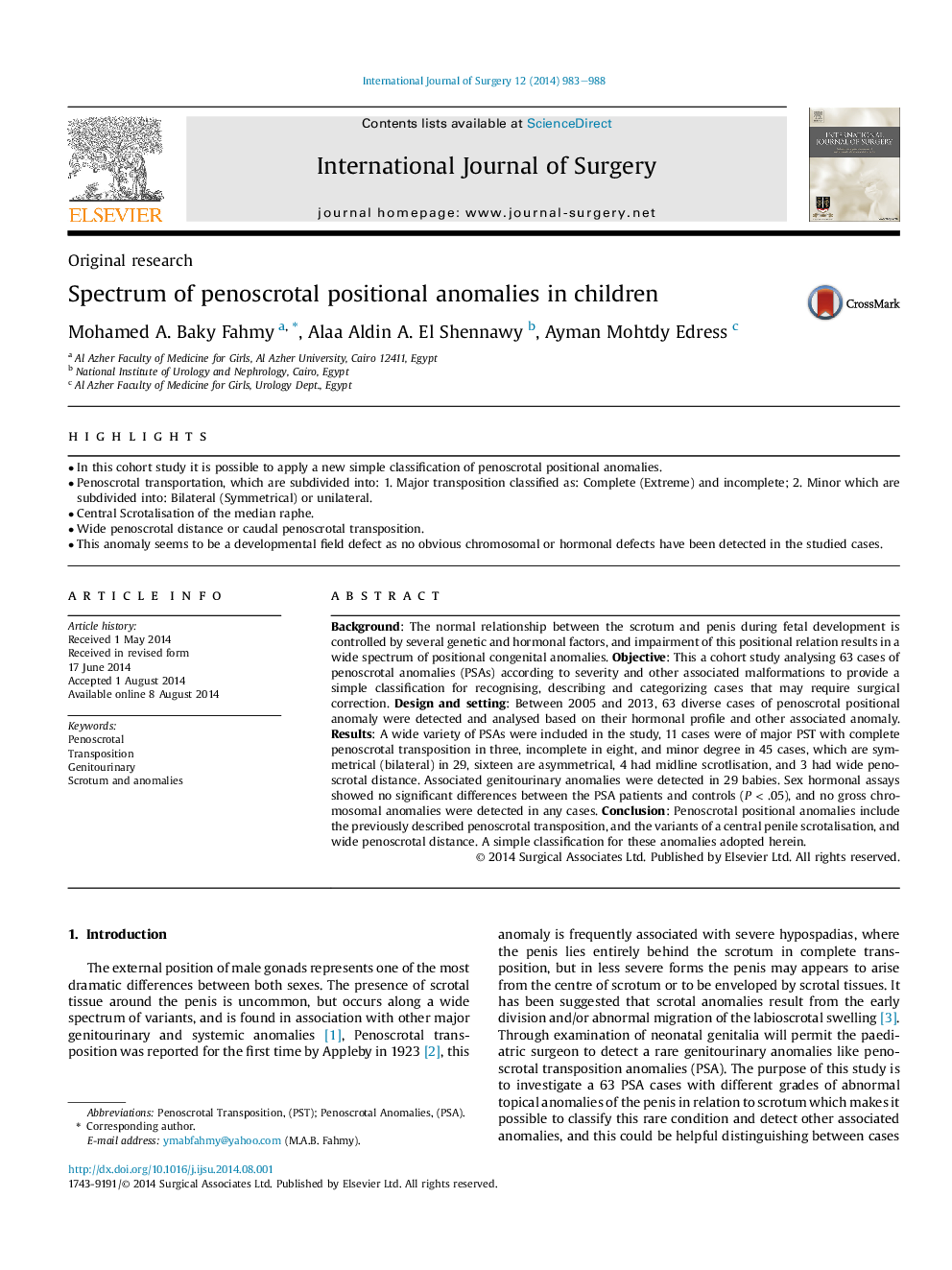| کد مقاله | کد نشریه | سال انتشار | مقاله انگلیسی | نسخه تمام متن |
|---|---|---|---|---|
| 6251731 | 1611986 | 2014 | 6 صفحه PDF | دانلود رایگان |
- In this cohort study it is possible to apply a new simple classification of penoscrotal positional anomalies.
- Penoscrotal transportation, which are subdivided into: 1. Major transposition classified as: Complete (Extreme) and incomplete; 2. Minor which are subdivided into: Bilateral (Symmetrical) or unilateral.
- Central Scrotalisation of the median raphe.
- Wide penoscrotal distance or caudal penoscrotal transposition.
- This anomaly seems to be a developmental field defect as no obvious chromosomal or hormonal defects have been detected in the studied cases.
Background: The normal relationship between the scrotum and penis during fetal development is controlled by several genetic and hormonal factors, and impairment of this positional relation results in a wide spectrum of positional congenital anomalies. Objective: This a cohort study analysing 63 cases of penoscrotal anomalies (PSAs) according to severity and other associated malformations to provide a simple classification for recognising, describing and categorizing cases that may require surgical correction. Design and setting: Between 2005 and 2013, 63 diverse cases of penoscrotal positional anomaly were detected and analysed based on their hormonal profile and other associated anomaly. Results: A wide variety of PSAs were included in the study, 11 cases were of major PST with complete penoscrotal transposition in three, incomplete in eight, and minor degree in 45 cases, which are symmetrical (bilateral) in 29, sixteen are asymmetrical, 4 had midline scrotlisation, and 3 had wide penoscrotal distance. Associated genitourinary anomalies were detected in 29 babies. Sex hormonal assays showed no significant differences between the PSA patients and controls (PÂ <Â .05), and no gross chromosomal anomalies were detected in any cases. Conclusion: Penoscrotal positional anomalies include the previously described penoscrotal transposition, and the variants of a central penile scrotalisation, and wide penoscrotal distance. A simple classification for these anomalies adopted herein.
Journal: International Journal of Surgery - Volume 12, Issue 9, September 2014, Pages 983-988
